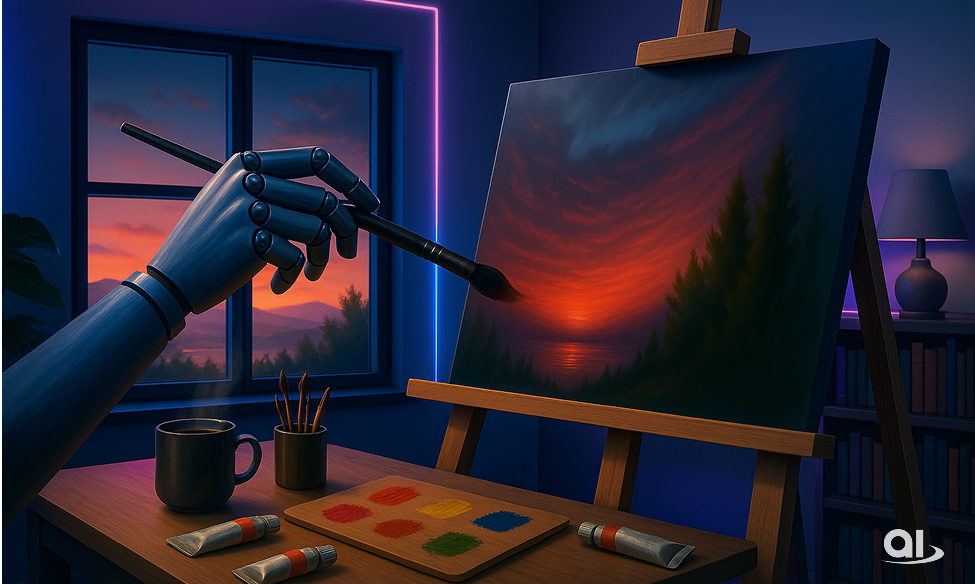How tools like Sora are redefining the creative industry

Reading time:
minutes
The media landscape is changing faster than ever, and a central driver of this transformation is generative AI. While AI-powered text generators like ChatGPT have already become commonplace in marketing departments, newer models like Sora from OpenAI are opening up entirely new dimensions. By 2025, the creation of videos, animations, and visual worlds from simple text prompts has become a reality.
What Is Generative AI and What Makes Sora Unique?
Generative AI refers to technologies that can autonomously create content: text, images, music, videos, or code. While text-based models like GPT-4 and Claude have long dominated the space, multimodal systems like Sora, developed by OpenAI, have been gaining significance since 2024. Sora generates realistic short videos purely from text prompts—no camera, script, or post-production is required.
What makes Sora unique is its combination of high visual quality, contextual understanding, and ease of access. Users can describe scenes in natural language—such as “a high-energy commercial for a new e-bike in an urban setting at sunrise”—and receive visual content within seconds that is immediately usable.
This technology is not only revolutionizing content production but also enabling an unprecedented level of speed and creative variety in execution.
What Are the Benefits of Generative AI for Marketing and Media?
For marketing departments, agencies, and media companies, tools like Sora are opening up new ways to create, test, and deliver content—with significantly less effort and greater creative freedom.
Key benefits include:
- Cost savings: Expensive video productions involving actors, locations, and film crews can often be replaced or supplemented.
- Speed: Campaign ideas can be visualized and presented within minutes—ideal for pitches, A/B testing, or social media.
- Creative freedom: Marketers can generate scenes, brand environments, or visionary concepts that would be difficult or impossible to realize in real life—such as futuristic worlds or historical recreations.
- Personalization: Content can be easily adapted for different audiences, markets, or channels—through different languages, visuals, or formats.
- Scalability: Once created, content can be flexibly modified, repurposed, and automated—particularly useful for omnichannel campaigns.
These advantages make generative AI not a replacement for traditional creative work, but a strategic tool for executing ideas faster, more precisely, and more cost-effectively.
How Is Sora Being Used in Marketing Today?
By 2025, many companies are actively using generative video AI as part of their content strategies.
A sportswear brand, for example, produces product clips for social media entirely with Sora—individually tailored to different age groups, languages, and platform formats (TikTok, Instagram Reels, YouTube Shorts). These clips are automatically localized, adapted, and enriched with call-to-actions, all at significantly lower production costs.
A tourism brand uses Sora to generate emotional campaign videos before any real footage is available. This allows the marketing team to test and refine entire concepts before a real shoot is even planned—or necessary.
Smaller startups benefit too: a sustainable fashion e-commerce store creates mini-documentaries with Sora that visualize production processes—engagingly and without on-site filming. The combination of storytelling, visual quality, and brand messaging is produced entirely within the tool.
How Will Generative AI Transform the Media Landscape in the Long Term?
In the long term, generative AI will fundamentally change media production—not only in terms of speed, but also in terms of roles within the creative process. Creative teams are increasingly acting as curators, strategists, and prompt designers. They define content, objectives, and tone, while the AI delivers suggestions, variations, and visual executions.
Business models are also evolving: agencies offer AI-generated prototypes as a service, media houses test formats using synthetic content, and brands are building content engines capable of distributing multilingual assets around the clock—fully automated and data-driven.
The trend is not toward “less creativity,” but toward greater feasibility at a consistently high creative standard. Ideas that once failed due to budget or resource limitations can now be realized—often in just a few minutes.



